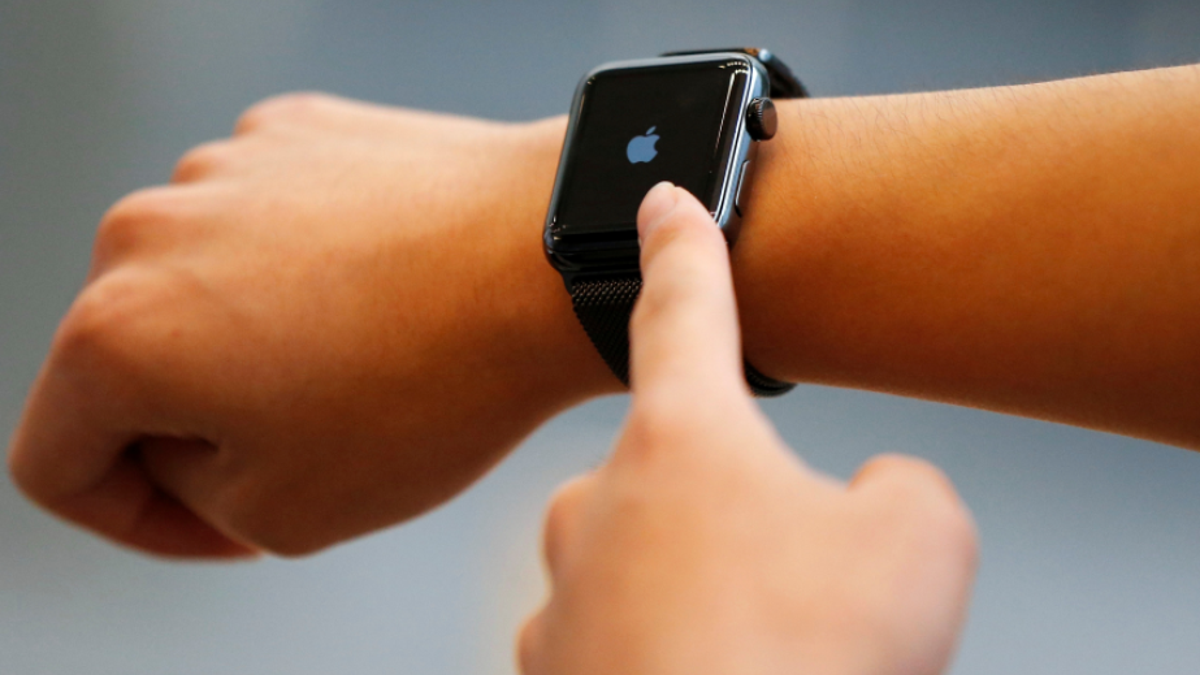
(Credit: Reuters)
Apple has only offered a rectangular Apple Watch design since the wearable first launched in 2015. But a new patent from the company suggests it's at least thinking about other options.
Apple was recently awarded a patent by the U.S. Patent and Trademark Office (USPTO) that relates to a circular Apple Watch design. The patent, called "electronic device having display with curved edges," discusses how information would be displayed and presented on a device with a round screen. Specifically, Apple says that the way for displaying content on a circular display instead of a rectangular option is different. And with help from curved edges, it believes it can address that problem.
"Pixel arrays often have rectangular shapes," the patent reads. "However, rectangular pixel arrays will not fit efficiently within a device having a circular shape. Circular displays can have bottleneck regions in which signal lines become crowded, leading to inefficient use of display area. It would therefore be desirable to be able to provide improved displays such as circular displays or other displays with curved edges."
While Apple didn't necessarily offer a smoking gun, the company did say that the technology could be used effectively in smartwatches. Apple also shared a drawing (above) in the patent filing that looks awfully similar to a smartwatch.
More From Tom's Guide
Rumors have been swirling for years that Apple is at least considering a round Apple Watch design, but with each new iteration, it sticks with the same rectangular case. Whether that will change in the future is unknown, but it appears Apple is at least considering the move.
Indeed, the round Apple Watch patent was filed in 2016, nearly a year after Apple released its first smartwatch. As Patently Apple, which earlier reported on the patent suggests, it's possible Apple has been thinking about circular designs since then and has tasked its engineers to find a solution to what it believes is a problem with the round smartwatch's display.
That said, Apple, like other big companies, files for patents all the time on technologies that will never come out. It's entirely possible this patent technology will meet the same fate.
